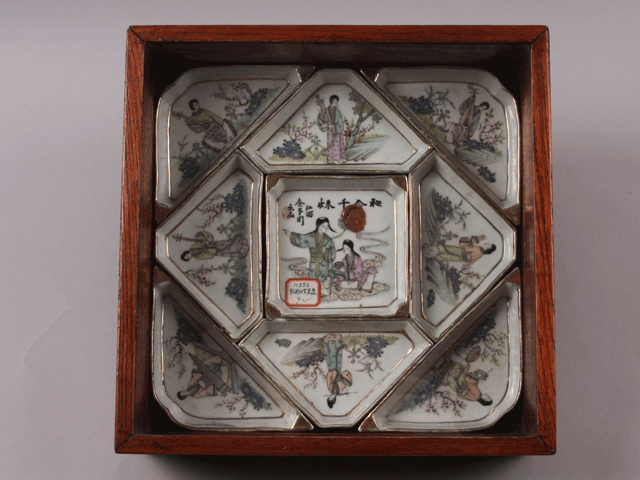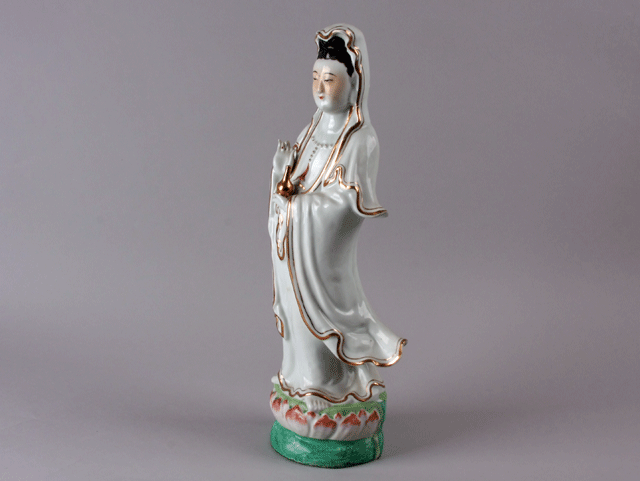
Tray of Happiness owned by the Chan Family. Photo by T. Ocken.

Tray of Happiness owned by the Chan Family.
Photo by T. Ocken.
The above photo provides a better look at the individual porcelain dishes that are fitted into the wood tray. Ms. Chan writes, "On our People to People tour of China and Japan in 1981, our scheduled tour was very much controlled. In the hour that we were allowed, we purchased this antique Tray of Happiness and a few antique vases at the Shanghai Museum, which still looked like something from the 1920s. Three years ago we visited the new Shanghai Museum, which is more modern than a lot of museums in the United States."
Ms. Chan then quotes Erin Moriarity:
"The ... octagonal prosperity tray is commonplace during Chinese New Year. It should have eight sides because the number eight is also a symbol, that of prosperity. This tray, placed in front of guests, is filled with eight symbolic sweets. They are candied melon (growth and good health), melon seeds dyed red (joy, happiness, truth, and sincerity), lychee nuts (strong family relationships), kumquats (prosperity or gold), coconut (togetherness), peanuts (long life), longan (many good sons), and lotus seeds (many children). Adults must place a lai see or red envelope in the center of this tray after enjoying a piece of its contents."
The Chan family also loaned a statue to the museum for the photo shown
below.

Statue owned by the Chan Family.
Photo by T. Ocken.
Carolyn Chan writes of this statue, "The Amendment to the 1945 War Brides Act allowed Chinese American veterans to bring brides into the U.S. My uncle Dan Wy, an army veteran, went back to China to marry his wife Jeannie. While there, he had a reunion with his Aunt King Fong, who asked him to bring two Kwan Yin stuatuettes back with him as gifts to her nieces—my mother Mamie and my Aunt Ida. (This was my mother's statuette.) King Fong had known Mamie and Ida when they had been in China to study Chinese language and culture in the late 1920s. Kwan Yin is considered the Goddess of Mercy and Compassion."
The name of the goddess is also spelled Guan Yin. To see the museum's statue of the goddess, please click here.
See source code for photo credits and copyright information. Page last revised on November 13, 2015. Please report problems to toh@unm.edu